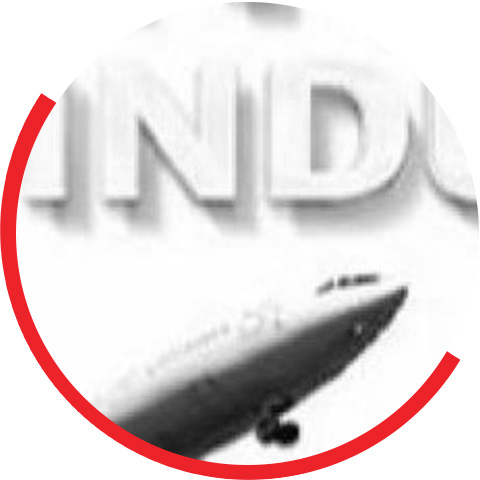The new digital transformation offering 'Platformation' aims to help businesses move towards platform based business models backed by technology says Sonata Software CEO & MD Srikar Reddy
Sonata Software is all set to formally launch its new digital business transformation offering 'Platformation' in the next few months. This offering is designed and built with the primary focus on enabling businesses and organizations to adopt technology backed new business models and drive digital transformation.
"Platformation' is trying to address the key four dimensions that makes any platform based business successful, which includes massive scalability, create partner based ecosystem, open standards and data driven intelligence," Sonata Software's CEO & MD Srikar Reddy told ETCIO.com during an interaction.
"These are the four criteria that would allow companies to determine where their businesses are standing in terms of creating a truly platform based business," added Reddy.
While these four criteria are critical for the business, he informed that his company has come up with a technology solution that would match those business criteria's technology aspects.
The 'Platformation' offering
Sonata's 'Platformation' offering is a digital IP based technology led proprietary framework that takes into account some 16 key parameters that would enable businesses and enterprises to create technology platform based new digital business models. It's a cloud based offering agonistic of cloud service providers.
'Platformation' has three variants – first is Sonata-Ready, which is the company's own IP based end-to-end solution with fast implementations and proven processes for businesses and customers.
Second is Sonata Accelerate, where company deploys and manages the platforms from technology partners like Microsoft and SAP for customers and businesses that already have initiated some level of business transformation initiatives.
And third is Sonata Custom - a completely custom-built solution based on either company's own platforms, which customers can white label it or source code the license and build on top to it.
Compared to the first and second option, which are based on a linear model of licensing, Reddy explained that the third one is where the customer will able to know the cost on licensing, running the platform and also can use it as per own requirements.
Backstory of 'Platformation' journey
Interestingly, the company's 'Platformation' journey had found its footings some 2-3 years ago when it had acquired some IPs which were digital in nature.
This included California based Halosys – an enterprise mobility management platform, Atlanta based IBIS (Interactive Business Information Systems Inc.) – a supply chain platform running on Dynamics AX solution and US based Rezopia – a cloud based travel industry software platform.
In the meantime, the company also built its own retailer platform 'Brick & Click'-- which is an omni-channel commerce platform for retailers to go online using Microsoft Dynamics. Besides, it has also created a horizontal platform that enables the deployment and management of other platforms.
During the same period, Sonata participated at the World Economic Forum, which had the theme of 'Fourth Industrial Revolution' based on the book by Professor Klaus Schwab.
"Over there they mainly discussed about the future of industry including the physical and digital sides led by the innovations of 3D printing, new material science, automation, robotics, etc. They coined the term 'platform based business models' for successful businesses globally which have adopted platform based business models," Reddy shared about the past incident. The influence of that industry forum and particularly the concept of 'platform based business models' was so high that it actually provided Sonata's top management the ground to ideate and research around some of the successful new-age digital companies like Amazon, Netflix, Airbnb, Uber and eventually come up with its next offering named as 'Platformation.'"We coined the term 'Platformation' which basically is digital transformation achieved through implementing platform based business models using technology framework that can help to create platforms," Reddy defined what the term 'Platformation' means.
Markets and customers
Company though hasn't formally announced and launched its new 'Platformation' offering in the Indian market, but already it has some overseas customers.
For instance, one of Australia's major railway networks has deployed the cloud based Sonata-Ready solution for complete running of its rail reservation system for passengers leveraging Sonata's travel platform.
Similarly, a global travel company has been using Sonata Custom solution with source code licensing to build a business model that suits the company's requirements by leveraging the travel platform.
From the market perspective, Reddy informed that the new offering is mainly for international markets with the key focus on four verticals including travel, retail, distribution and hi-tech or ISVs (independent software vendors). Company's services business largely comes from overseas market.
"Even our Indian business which is mainly the reselling of (software) products, we are trying to repackage that business as a platformation partner for our clients creating digital infrastructure and managing it with tools rather than just selling some products," Reddy commented.
Repositioning of business
Perhaps, Sonata's expanding focus on 'Platformation' may appear more like it is drifting from its old core revenue generating software selling business.
Although Reddy disagreed to that change, which is slowly evolving in company's business strategy but interestingly he called it "repositioning of business". "No, we are not moving away from selling of the software. But we are saying that value add while selling software is lot more rather than just seller of the software. A seller of the software that helps you with your platformation journey and will help you to manage it," Reddy emphasized.
"So we are repositioning, like our services business as a platform for our partners, we are repositioning our license sell that would help companies to become platform company using these things and applying the same logic," he said further.
With a strong IP led portfolio, The company is banking more on what it calls the IP-led services growth across those four three sectors backed with its strong domain knowledge and technology expertise.
"Ideally, 'Platformation' is a concept and it is not an offering, but finally the offering is either IP or services. So the message we are telling to people is that if they want a successful digital strategy than they need to adopt and embrace platform based concepts and we will help them," Reddy noted.
Going ahead over the next 3-5 years, Sonata wants to establish itself as a strategic platformation partner for its customers. Initially by working with some of its existing clients that have same vision around platform based business models and also tap new customers.
Digital transformation – a long journey
Despite so much buzz around the digital business in recent times, Reddy concluded in more cautious and realistic terms that it's a long 12-15 years journey and not a short overnight trip for businesses and enterprises to become digital platform companies."Basically digital transformation is a CEO issue and not CIO, CFO or CMO thing because it's the CEO's idea of what business he or she is running and how can technology help transform it. So we need more tech savvy CEOs to drive this kind of initiative because it's a fundamental change that has to come from the top," Reddy said. Originally published on ETCIO.com










